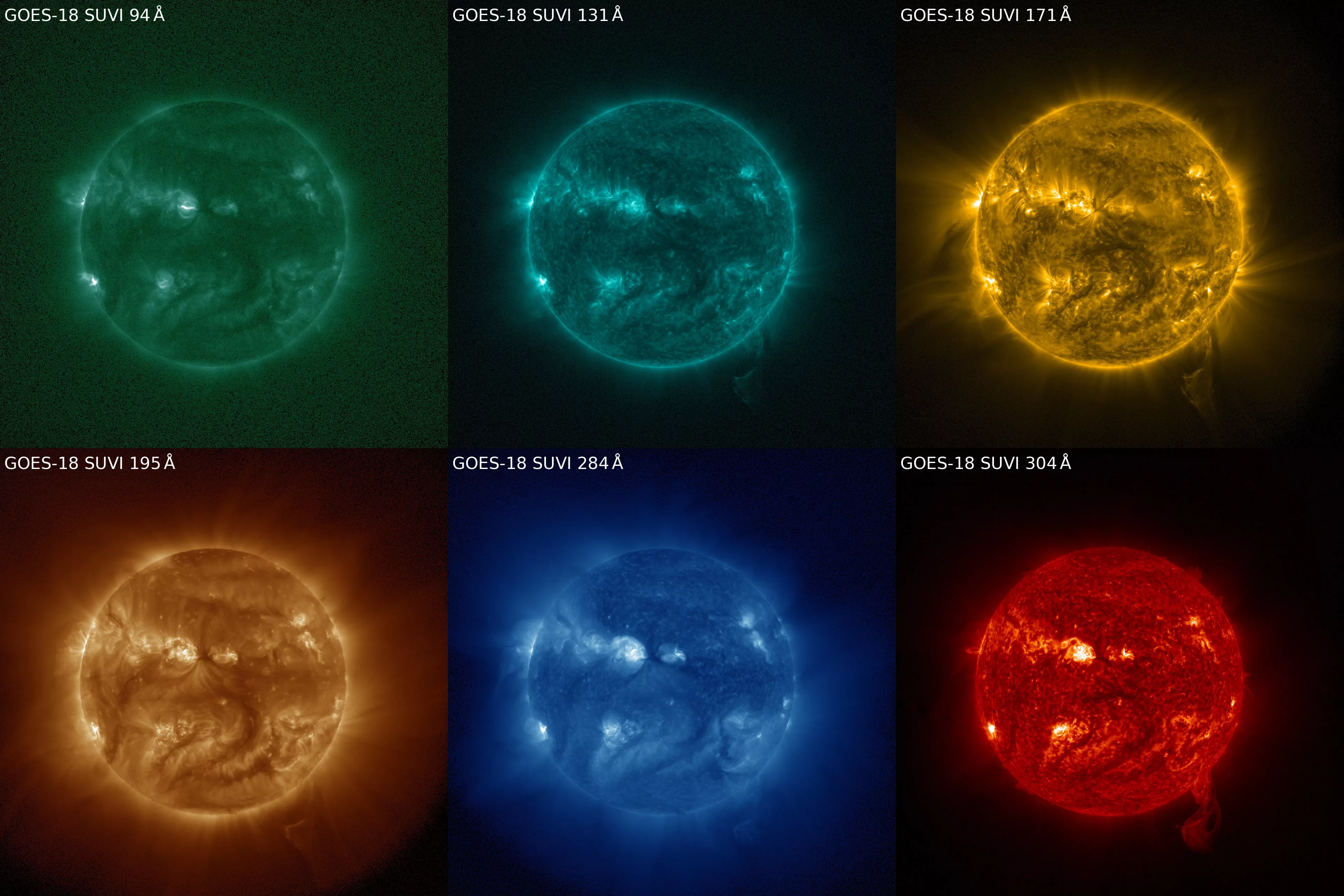SOLAR CYCLE 25 ACTIVITY REPORT DECEMBER 28
Solar activity has been at very low levels for the past 24 hours. Few minor C-class flares. The largest event of the period was a C2.3 flare from AR3169 at 16:57 UTC on December 28
There are currently 6 numbered sunspot regions on the solar disk: AR3169, AR3171, AR3173, AR3175, AR3176 and new region AR3177
AR3177 located on the southeast (S18E71) is a group of 3 sunspots with a alpha magnetic field and an area of 90HM. According to NOAA it has a 35% chance of producing C-class flares
The total number of sunspots has decreased to 88 (28 of these are grouped into 6 active regions) NOAA forecasts for the next 24h: 90% chance for C flares, 35% chance for M flares and 10% chance for X flares.
● Auroral Activity
The geomagnetic field has been at quiet levels for the past 24 hours. Solar wind speed reached a peak of 557.6 km/s at 05:24 UTC on December 28 The maximum planetary index of the period was kp 2
Aurora Oval

Solar wind flowing from a northern coronal hole could graze Earth on New Year's Eve.

● Current Conditions at 04:40 UTC on December 29
▪︎Geospace quiet
▪︎Geomagnetic conditions now Kp 0.67
▪︎Solar wind speed record: 424.4 km/sec
▪︎density: 4.06 protons/cm3
▪︎Neutron Counts today: -1.8% Below Average
▪︎X-ray Solar Flare: C2 at 02:25 UTC
▪︎Sunspot number: 88 (SN 89 Dec 28)
SpaceWeather.com
SpaceWeatherlive..com
Solar activity has been at very low levels for the past 24 hours. Few minor C-class flares. The largest event of the period was a C2.3 flare from AR3169 at 16:57 UTC on December 28
There are currently 6 numbered sunspot regions on the solar disk: AR3169, AR3171, AR3173, AR3175, AR3176 and new region AR3177
AR3177 located on the southeast (S18E71) is a group of 3 sunspots with a alpha magnetic field and an area of 90HM. According to NOAA it has a 35% chance of producing C-class flares
The total number of sunspots has decreased to 88 (28 of these are grouped into 6 active regions) NOAA forecasts for the next 24h: 90% chance for C flares, 35% chance for M flares and 10% chance for X flares.
● Auroral Activity
The geomagnetic field has been at quiet levels for the past 24 hours. Solar wind speed reached a peak of 557.6 km/s at 05:24 UTC on December 28 The maximum planetary index of the period was kp 2
Aurora Oval
Solar wind flowing from a northern coronal hole could graze Earth on New Year's Eve.
● Current Conditions at 04:40 UTC on December 29
▪︎Geospace quiet
▪︎Geomagnetic conditions now Kp 0.67
▪︎Solar wind speed record: 424.4 km/sec
▪︎density: 4.06 protons/cm3
▪︎Neutron Counts today: -1.8% Below Average
▪︎X-ray Solar Flare: C2 at 02:25 UTC
▪︎Sunspot number: 88 (SN 89 Dec 28)
SpaceWeather.com
SpaceWeatherlive..com





